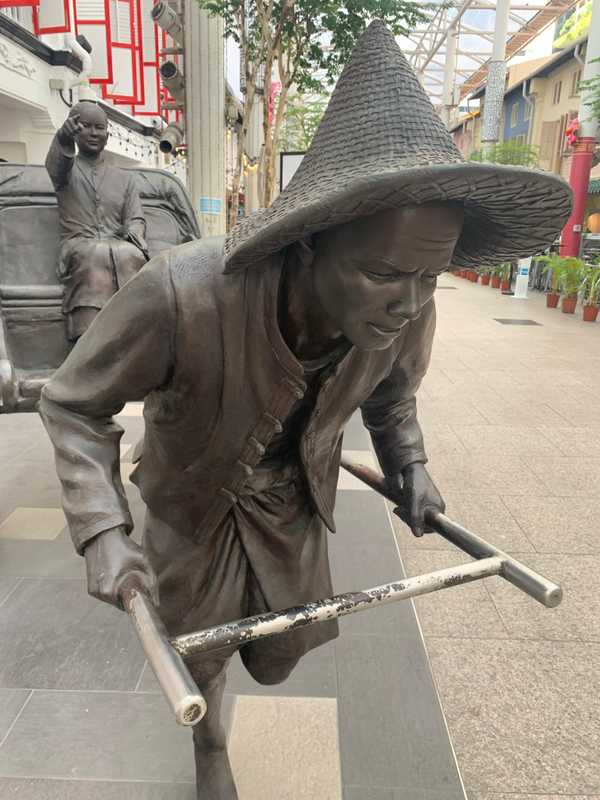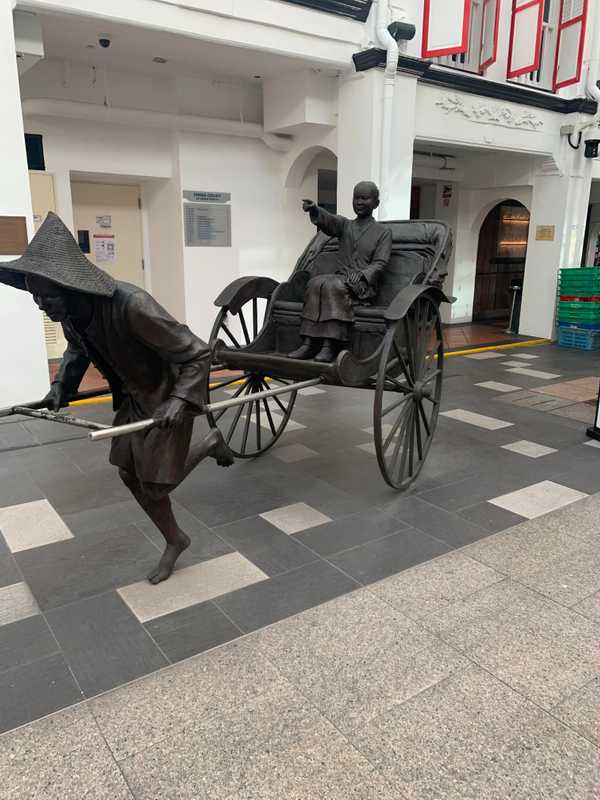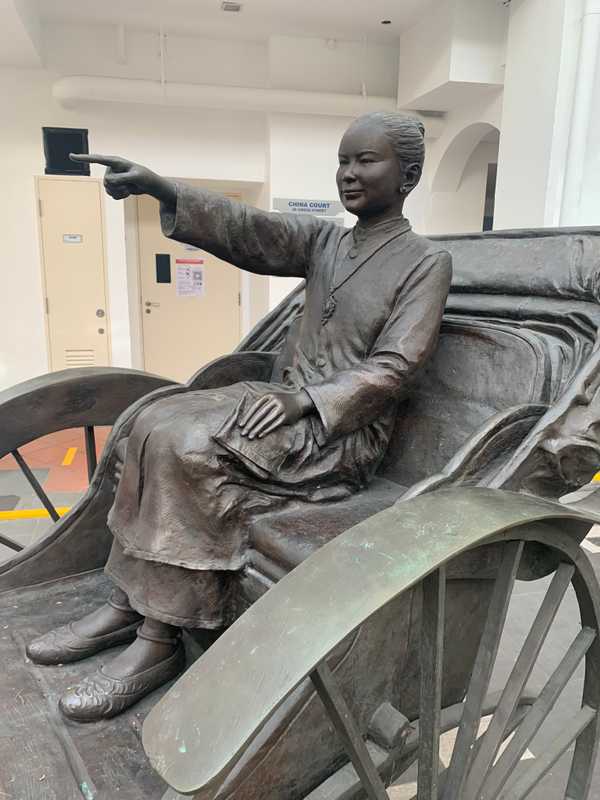Heading Home
First placed in Singapore: 2013
the pedestrianised Nanking St
Probably won't be there very long, but the yellow Jonnie Walker advertising statue visible in the first photo (2022) makes an interesting intervention into the work... #NotaLeeWen
Patron: China Place developers
More tourist realism in the Chinatown area. The Singapore River and Chinatown are the two areas that get this treatment. In this case however the artist is not identified.
Text of the Label:
Heading Home Bronze (2013)
The Rickshaw was a form of transportation in early Singapore, favoured by the well-to-do, British civil servants and government officials. Rickshaw pullers were mostly poor immigrants who came from Southern China in search of a better life in Singapore. This sculpture uses a realism approach, showing a wealthy Peranakan lady setting off for home, portraying the clear divide between the rich and the poor in early Singapore.
Rickshaws were small, light-weight carts with springs and large wheels. The rickshaw puller worked two shafts protruding from the front of the rickshaw and ran between them. The rickshaw was first imported from Shanghai to Singapore in 1880 and by 1888, a Jinricksha Department ('Jinricksha' refers to rickshaw in Japanese) was set up to register and license each rickshaw. By the end of the 19th century, there were about 1,000 rickshaw owners in
Singapore. The demand for rickshaws was so great that Japan began manufacturing cheaper versions.
The life of a rickshaw puller was harsh. Most could not afford to own a rickshaw and had to rent one. Rickshaw pullers lived in cramped cubicles in shophouses in Chinatown and earnings were meager. To ease the weariness of their overworked bodies, many turned to opium. Until 1904, all the rickshaws were two-seaters, which were heavy and often used to transport whole families and commercial goods; the weight was almost unbearable for the rickshaw pullers.
In 1911, the government tried to ban the two-seater rickshaw, but opposition delayed the passing of this law for another three years. However, when it was finally implemented, it proved ineffective. Fortunately, the single-seater soon emerged as the more popular rickshaw and the two-seater faded into disuse.
Rickshaws were gradually replaced by other means of transport: the trishaw, the electric tram, the bus and the car. After World War I (1942-1945), they were phased out by government legislation and the once familiar sight of rickshaws and rickshaw pullers disappeared forever from the streets of Singapore.
Last updated: Feb-27-2022




